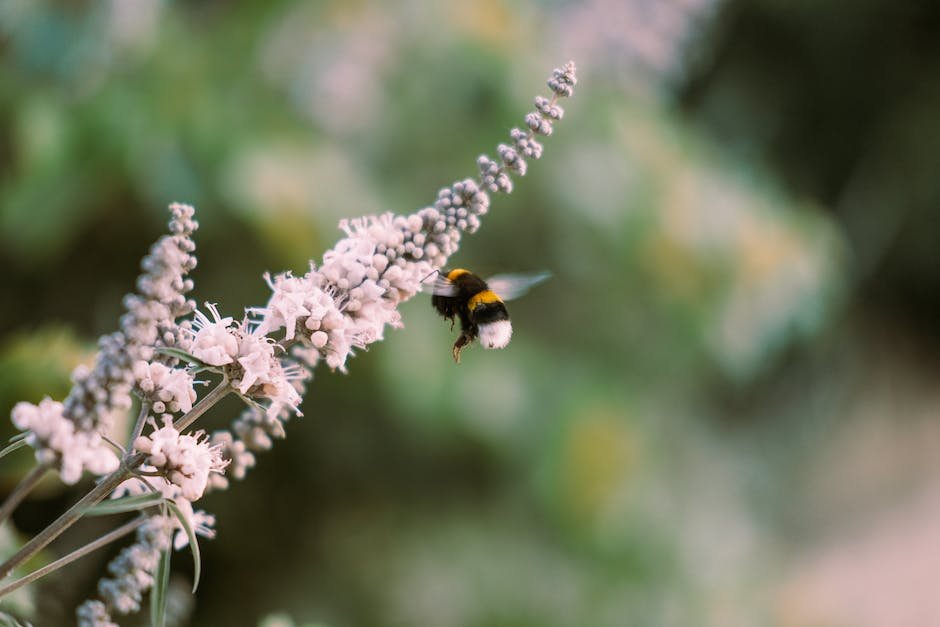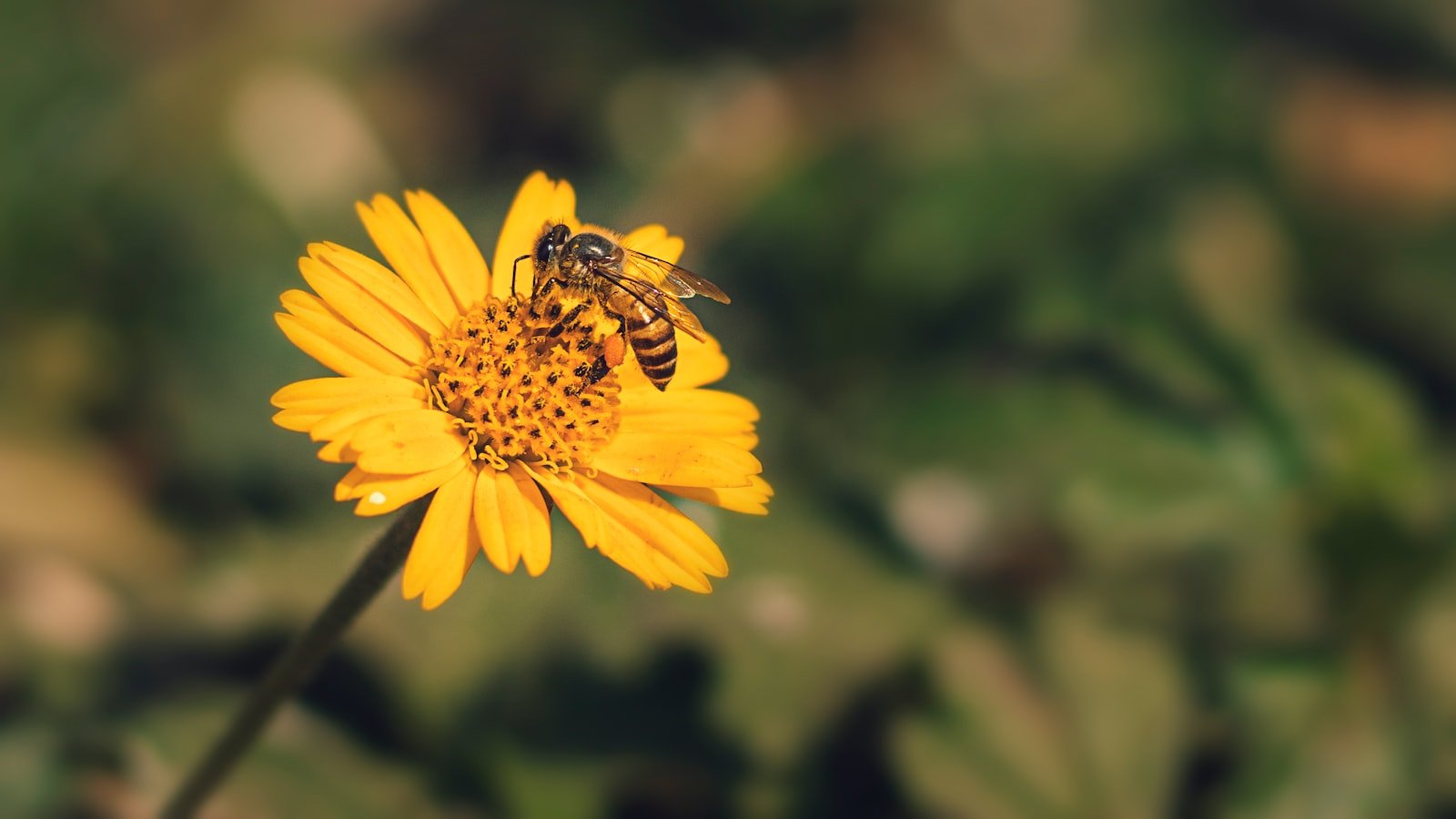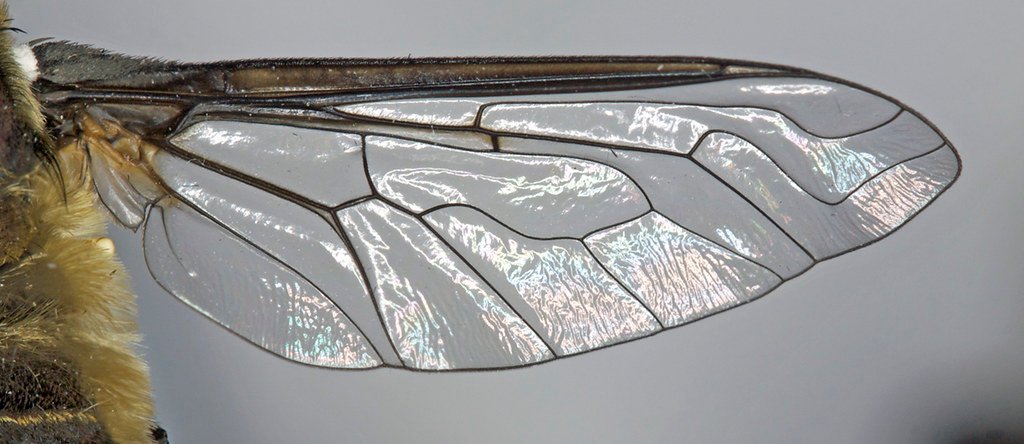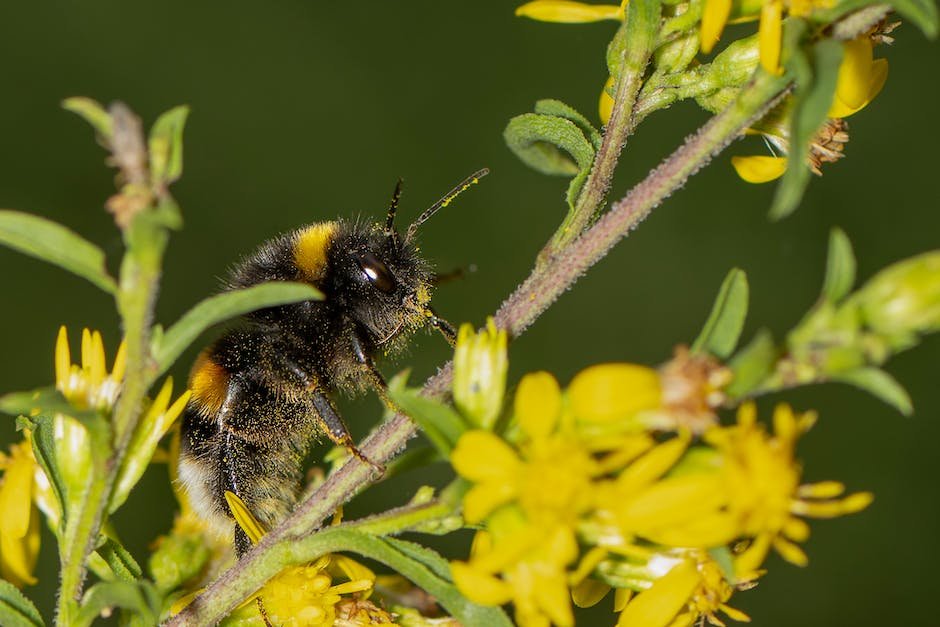Buzzing through the air, bees have long enchanted us with their delicate wings. But beyond their ability to flit from flower to flower, these industrious insects possess a secret language, hidden beneath the gentle hum of their flight. In the mysterious realm of the hive, bees employ an extraordinary method of communication: wing vibrations. Unlike words, these ethereal vibrations are imperceptible to our ears, yet they hold profound significance within the intricate world of bee society. Join us on a mesmerizing journey into the depths of this buzzing dialect, as we unravel the enigmatic code that bees use to converse in ways we have never imagined. Prepare to be amazed by the astonishing complexity of these winged emissaries and the remarkable tales they silently tell.
Table of Contents
- Buzzing: The Surprising Language of Bees
- Unveiling the Mystery: How Bees Communicate through Wing Vibrations
- Decoding the Complexity: The Intricate Signals of Bee Wing Vibrations
- Unlocking Nature’s Code: Understanding the Range of Bee Vocalizations
- Bee Speak: Unlocking the Secrets of Wing Vibrations
- Q&A
- In Summary

Buzzing: The Surprising Language of Bees
Have you ever wondered what all the buzz is about when it comes to bees? These fascinating insects have developed a complex language that allows them to communicate and coordinate with each other in their hives. Through a combination of buzzing, dancing, and even scent signals, bees are able to convey a surprising amount of information to their fellow hive members.
One of the most intriguing aspects of bee language is their buzzing. While it may seem like random noise to us, bees use different types and patterns of buzzing to communicate different messages. For example, a short, high-pitched buzz might signal the discovery of a new food source, while a long, low-pitched buzz could indicate the presence of a predator. By varying the frequency, intensity, and duration of their buzz, bees are able to convey specific messages to their hive mates.
But buzzing is just one part of the bees’ language repertoire. They also use intricate dance moves to communicate the location of food sources to other bees. Through a series of rapid, precise movements, a foraging bee can indicate not only the direction of the food but also the distance and quality. By interpreting these dances, other worker bees can gather valuable information and quickly locate the best food sources.
Furthermore, bees use scent signals to communicate within the hive. Each bee has a unique scent that helps identify them within the colony. By releasing specific pheromones, bees can convey messages about the status of the hive, the presence of the queen, or even signal the need for more worker bees to perform certain tasks.
In the world of bees, it’s clear that there is a rich and surprising language buzzing beneath the surface. From buzzing to dancing to scent signals, these remarkable insects have developed a sophisticated means of communication that allows them to thrive as a unified and efficient community.

Unveiling the Mystery: How Bees Communicate through Wing Vibrations
Bees, those tiny little creatures buzzing around us, have always intrigued scientists with their remarkable communication system. While their renowned ability to communicate through dance is widely known, researchers have recently discovered another fascinating method they use to convey information: wing vibrations. These minute vibrations, invisible to the naked eye, play a significant role in the intricate language of bees.
1. The Wing Waggle
One of the most captivating aspects of bee communication is the “wing waggle.” This unique behavior involves bees rapidly moving their wings back and forth, producing specific vibrations that transmit essential information to their fellow colony members. These vibrations act as a secret code, providing details about the location of food sources, potential threats, or even the discovery of a new nesting site.
2. Encoding and Decoding
Scientists have marveled at the precision and accuracy with which bees encode and decode messages through wing vibrations. Using highly sensitive hairs on their bodies, bees are able to detect and interpret these vibrations, thus unlocking the meaning behind them. Furthermore, researchers have found that bees can differentiate between various types and intensities of vibrations, indicating the complexity of their communication system.
3. The Secret Language
The discovery of bees communicating through wing vibrations has shed light on the astounding complexity of their secret language. It emphasizes the interconnectedness and cooperation within a hive, as bees share vital information to ensure the survival and prosperity of their community. Studying these wing vibrations not only gives us new insights into the extraordinary world of bees but also opens doors for innovative research and potential applications in fields such as robotics, communication technologies, and environmental conservation.

Decoding the Complexity: The Intricate Signals of Bee Wing Vibrations
The world of bees is buzzing with mysteries waiting to be unraveled, and their wing vibrations hold the key to decoding their complex signals. Exploring the intricate patterns and frequencies of bee wing vibrations presents a captivating journey into the realm of these tiny yet remarkable creatures.
At first glance, the vibrating wings of bees might seem like a mere act of flight, but the truth is far more fascinating. Through extensive research, scientists have discovered that these vibrations serve as a vital form of communication among members of a hive. These unique signals convey a wealth of information, from warning fellow bees of potential dangers to coordinating complex tasks within the colony.
It is awe-inspiring to discover the vast range of messages that bees communicate through their wing vibrations. By skillfully manipulating the frequency, amplitude, and duration of their vibrations, they can direct their fellow bees towards rich sources of nectar or signal the presence of predators. Moreover, these vibrations can indicate the readiness to mate or even convey messages about the quality and availability of food.
A deeper understanding of the complexities behind bee wing vibrations not only sheds light on their fascinating world but also opens doors to potential applications in various fields. From developing more efficient methods of pollination to enhancing strategies for hive management, unraveling the intricacies of these signals has the potential to revolutionize our interactions with bees and their environment. The study of bee wing vibrations is a testament to the remarkable abilities of these tiny creatures, reminding us of the wonders that await in the buzzing symphony of their wings.

Unlocking Nature’s Code: Understanding the Range of Bee Vocalizations
Bees are incredible creatures that communicate with each other through a wide range of vocalizations. Unlocking the secrets hidden within their buzzing language has always fascinated scientists and nature enthusiasts alike. By understanding the different noises and melodies these tiny insects produce, we can gain profound insights into their world and play our part in protecting their dwindling populations.
Types of Bee Vocalizations:
- Buzzing: The most common form of communication among bees, buzzing is generated by the rapid vibration of their wings. They use different frequencies and patterns to convey various messages, such as indicating the presence of danger or their location.
- Piping: An intriguing vocalization produced by worker bees, piping is a series of high-pitched sounds emitted during specific hive activities, such as swarming or queen rearing. It is believed to be a way for bees to synchronize their actions and maintain order within the colony.
- Dances: While not exactly vocalizations, bee dances are a fascinating form of communication unique to honeybees. Through intricate choreography and patterns, they convey vital information about the location of food sources and potential new nest sites.
Studying and deciphering these bee vocalizations opens up a world of possibilities for understanding their behavior and needs. It allows us to better comprehend their role as crucial pollinators and helps develop strategies to protect and conserve these vital creatures. So, let’s delve into the captivating realm of bee vocalizations and unlock nature’s extraordinary code!
Bee Speak: Unlocking the Secrets of Wing Vibrations
Within the intricate world of bees, communication takes on a fascinating form – wing vibrations. While these tiny creatures are renowned for their intricate dance language, they also utilize wing vibrations to convey important information to their fellow hive members. Scientists have only scratched the surface of decoding this mysterious form of bee speak, as it holds the key to understanding their social dynamics and survival strategies.
Through painstaking research and observation, scientists have identified different types of wing vibrations. The rapid buzzing or tremor-like vibrations, also known as “quivering,” are involved in tasks like recruitment, navigation, and even swarming. These vibrations have differing durations and frequencies, allowing bees to communicate vital information such as the location of nectar-rich flowers or the presence of potential threats. They act as a symphony in the air, orchestrating the collective efforts of the hive and ensuring their survival.
Furthermore, it has been discovered that young bees, known as “nurses,” produce specific wing vibrations when attending to the brood. These vibrations, which are slower and pulsating, seem to have a calming effect on the developing larvae. This unique form of communication helps regulate the development of the brood and maintain the overall well-being of the hive. The intricacy of wing vibrations has left scientists in awe of the sophistication that exists within the social world of bees, unlocking a mesmerizing realm awaiting further exploration.
Q&A
How do bees use wing vibrations to communicate?
Bees use wing vibrations, also known as bee dances, to communicate important information such as the location of food sources and potential new hive locations to other bees. These communication dances involve specific movements and durations that convey precise information to the bee audience.
What kind of information can be communicated through wing vibrations?
Through their dances, bees can communicate the distance and direction of a food source or a potential new hive location. They convey this information by the duration and angle of their dances, allowing other bees to accurately locate the source or destination.
How do bees learn and understand these wing vibrations?
Bees learn and understand wing vibrations through a process called social learning, which involves observing and mimicking the dances performed by experienced forager bees. Young bees then imitate these dances until they become proficient at communicating the same information.
What makes wing vibrations an effective mode of communication for bees?
Wing vibrations are an effective mode of communication for bees for several reasons. Firstly, they can transmit information quickly and accurately to a large number of bees simultaneously. Additionally, their dances are highly specific and can convey precise information, ensuring efficient communication within the bee colony.
Can bees discriminate between different types of wing vibrations?
Yes, bees can discriminate between different types of wing vibrations. They have the ability to detect subtle differences in the duration, intensity, and pattern of the dances, which allows them to decipher various messages encoded in these wing vibrations.
Do bees from different species understand each other’s wing vibrations?
While there may be some variations, bees from different species generally understand and respond to each other’s wing vibrations. The fundamental principles of the dance language seem to be shared across many species, enabling effective communication even between different bee species.
In Summary
As we delve deeper into the remarkable world of bees, we come to understand the power of their tiny wings that effortlessly propel them through the air. These intricate appendages are not just magnificent tools of flight; they also serve as a secret language, transmitting messages that remain hidden to the human ear. Through a delicate ballet of wing vibrations, bees have crafted an intricate means of communication, one that is as awe-inspiring as it is complex.
In this journey through the hive, we have witnessed the symphony of vibrations that take place within its buzzing chambers. These vibrations, subtle and elusive, carry a wealth of information about the bee’s needs, experiences, and intentions. It is as if the wings themselves effortlessly translate the language of the hive, allowing the bees to effectively navigate their collective existence.
We have glimpsed moments of wonder as colonies join together in a harmonious chorus, the vibrations creating a mesmerizing tapestry of unity. It is a reminder that in the intricate web of nature there lies a hidden language that defies our comprehension. A language that, although inaudible to our human ears, shapes the destiny of entire colonies and ensures the survival of this extraordinary species.
So as we bid farewell to this captivating realm of the bees, let us reflect on the significance of their wing vibrations. Let us marvel at the profound ways in which nature has equipped these remarkable creatures with the means to communicate, cooperate, and thrive as a community. Perhaps, in recognizing the brilliance of this silent language, we can find inspiration to listen more closely to the subtle messages that surround us and embrace the power of communication, not only in the world of bees but in our own lives as well.
In the grand tapestry of existence, the bee’s secret whispers remind us that even the tiniest of creatures hold lessons that can resonate deeply with our own human experience. And as we venture forth, may we carry with us a newfound appreciation for the wings that carry these whispers and the abundant wisdom they silently impart.
As an affiliate, my content may feature links to products I personally use and recommend. By taking action, like subscribing or making a purchase, you’ll be supporting my work and fueling my taco cravings at the same time. Win-win, right?
Want to read more? Check out our Affiliate Disclosure page.